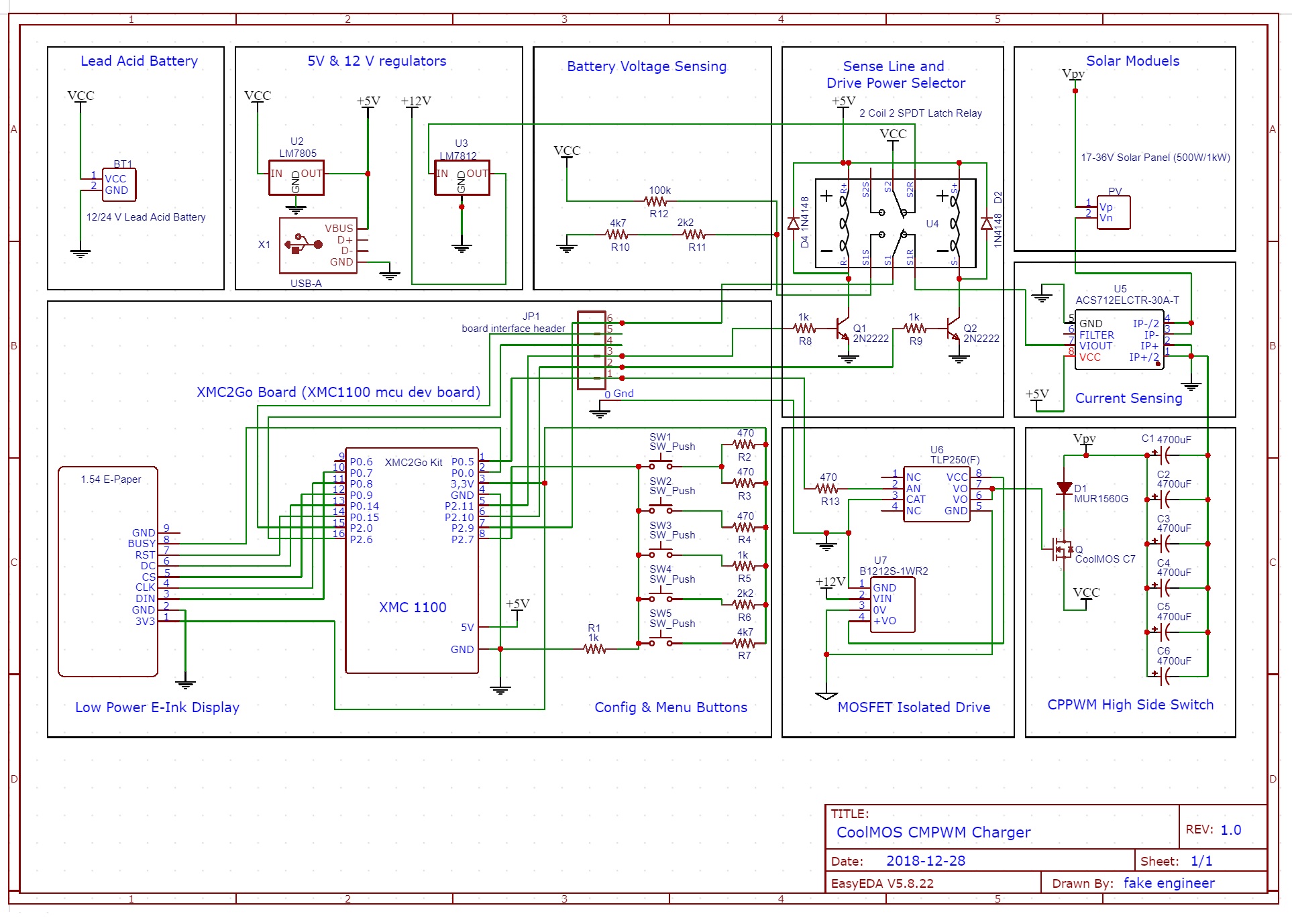This project demonstrates a different type of PWM charging topology, which can push more current during charging compared to the regular PWM.
When it comes to cheaper & safer energy storage, lead-acid battery is still widely used solution. The century old battery technology is bulky compared to Lithium-based modern batteries, but it can withstand more abuse, provides easy charging.
Target Application- DC home energy storage based on photo voltaic & lead-acid battery banks.
- Small EV charging station in rural areas for e-bikes, e-scooters, etc.
- Battery charging business in isolated areas.
This is the final hardware:
Normal PWM can deliver close to maximum Isc (Short Circuit) current from a solar panel to the battery during on and delivers no current during off. Which fails to utilize the available energy from solar panels. On the other hand, MPPT is a bit complicated to implement from design point of view.
But, if a high capacity capacitors bank ( 20000uF to 100000uF ) is connected parallel to the solar panels, it can store the charge during the "space" time of PWM cycle.
When PWM signal goes high, both the solar panel & the capacitor can deliver a much higher current to the battery than the Isc current of solar panel.
Depending on the size of solar panels, capacitor banks and state of charge of the battery the duty cycle is adjusted to maximize the current while avoiding battery overcharging. This is how CPPWM works. More energy is transferred from panels to battery with this method than regular PWM
Hardware ExplainedThe project is developed around XMC2Go kit from Infineon as the host controller. Following block diagram shows how the system works :-
- XMC 4200 on XMC2Go kit : Serves as the programmer (+debugger) for the application mcu XMC1100, communicates with the PC through USB during programming
- XMC 1100 MCU: Performs as the application microcontroller for the system, controls charging, monitors charging current, battery voltage, user interaction, display updates with system parameters.
- ePaper Display: Shows user with data associated with charging, such as current, voltage, energy produced etc.
- Voltage Regulators: Provides 5 volts for powering the XMC2Go kit and 12 volts for the MOSFET driver
- Opto-Isolated Drive: Generates isolated voltage with W1212 and Gate drive with TLP250 for driving CoolMOS.
- CoolMOS: Switches current from solar panel and capacitor banks to the battery as needed
- Current Sensor & Voltage Sensor: Senses charging current and battery voltage to inform application mcu for optimum operation.
- Latch Relay: Switches off Isolated Gate drive and use one ADC to sense both current and voltage cyclically.
- Capacitor Bank: Stores charge during PWM off from solar panel and gets discharged during PWM on to charge battery.
- Solar Panel & Battery: Generates energy during day and stores energy for using later.
With this topology, a large pulse current flows combined from both the solar panels and charged capacitors, which is higher than the Isc of solar panels.
CoolMOS C7 has a high pulse drain current of 245 A & low Rds on of 28 mOhms, the power loss is minimum compared to other MOSFETs. This makes the CoolMOS a suitable choice for this application.
Charging low voltage (12/24/48 V) battery banks is possible with few times higher solar panels (100V) with this topology, as CoolMOS has a very high Vds of 600V.
ConclusionThe intention of this solution is to make DC-DC power conversion without any inductor, but it ended up with few other benefits:
- Low Frequency drive, low switching loss
- Easier Design and simple duty cycle control
- Energy tapping during PWM 'space' mode
- Energy transfer during PWM 'mark' mode
- Capacitor only Buck conversion
It's just a different approach to regular solutions.













_3u05Tpwasz.png?auto=compress%2Cformat&w=40&h=40&fit=fillmax&bg=fff&dpr=2)


Comments
Please log in or sign up to comment.